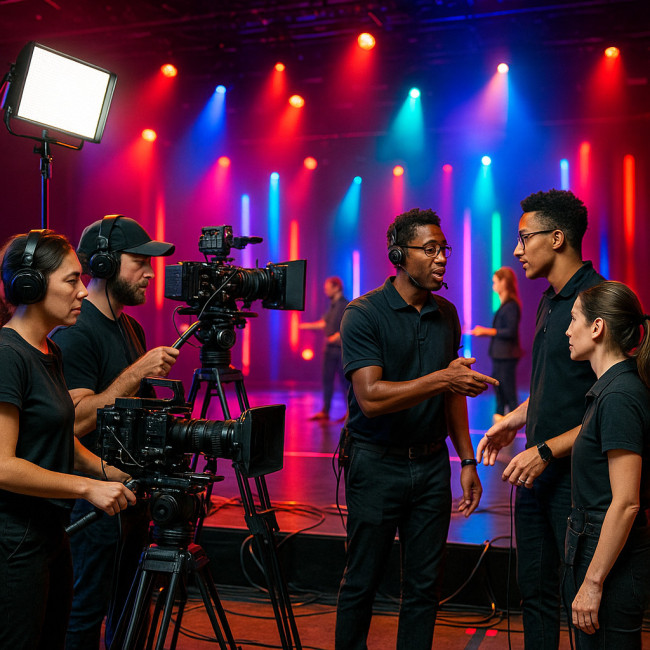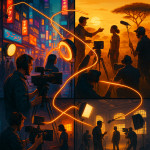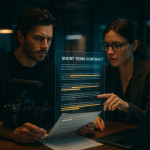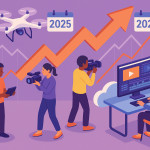On-set etiquette: collaborating smoothly with photographers and event staff
Your camera skills shine only when the set runs like clockwork. This guide breaks down the on-set etiquette that lets videographers, photographers, and event staff operate as one seamless crew—delivering better footage, happier clients, and repeat bookings.
The power of on-set etiquette in modern productions

On-set etiquette is the invisible glue that holds fast-moving shoots together. From small brand activations to arena concerts, the way you greet the venue coordinator or step aside for the still photographer can speed up—or sabotage—the entire day. When a jib operator knows exactly when the steady-cam will cross, or when a lighting tech anticipates the photographer's flash recycle time, the entire production flows like a well-rehearsed dance. Clients might not see the micro-courtesies, but they certainly feel the difference in reduced stress, shorter schedules, and a final asset library that looks meticulously planned instead of patched together. Etiquette is basically risk management in disguise: every clear cue and every respectful pause subtracts moments of chaos and adds minutes to creativity.
The hidden costs of poor collaboration
- Lighting resets caused by miscommunication can burn 15–30 minutes per setup.
- Audio bleed from loud walkie-talkies forces retakes and post-production cleanup.
- Tense crews raise client anxiety, eroding trust in future proposals.
Conversely, courteous coordination unlocks opportunities: combined gear rentals, shared assistants, and joint licensing deals. If you aim to pitch bundled AV services to land bigger gigs, spotless on-set etiquette is your first proof of professionalism.
Pre-production rituals that set the tone
1. Circulate a unified call sheet
Send one master call sheet that lists all crew roles. Include radio channels, quiet zones, and who has final say on schedule tweaks. This simple habit prevents the dreaded “Who's in charge?” moment when the client arrives.
2. Align visual priorities early
Photographers crave decisive angles; videographers chase motion flow. Host a 15-minute storyboard huddle on the scout day to trade must-have shots. You will avoid tripod turf wars and overlapping sight lines.
3. Clarify hand-off formats
Will you deliver a stills folder for social teasers? Will the photographer send you RAWs for the behind-the-scenes reel? Spell it out while quoting. Clear deliverables also support retainer agreements that secure ongoing revenue.
Live on-set etiquette: the 10 golden rules
| Etiquette Rule | Why It Matters | Pro Tip |
|---|---|---|
| Arrive 30 min before call | Gives buffer to fix venue access surprises | Use the extra time to map out cable runs |
| Introduce yourself to every department lead | Fosters trust; eases rapid-fire decisions later | Carry business cards with QR links to your reel |
| Keep chatter off open comms | Prevents distracting audio spill | Switch to text for non-urgent queries |
| Mark tripod legs and cables | Avoids safety hazards and crew clashes | Colour-code gaffer tape by department |
| Announce lens changes | Photographers can match focal lengths for consistency | Call out, “Going 85 mm portrait” over comms |
| Respect the still shot | A 1-sec pause saves retouch hours | Count “1001, 1002” before crossing the frame |
| Signal audio rolls clearly | Silences background crew noise | Use a hand raise plus visual tally light |
| Offer quick playback previews | Builds shared confidence in coverage | Set a folder on your monitor labelled “BTS review” |
| Log gear overlaps in real time | Prevents duplicate rentals on multi-day shoots | Shared spreadsheet, updated at lunch |
| Thank the venue crew | Secures smoother load-out and future referrals | Bring extra coffee vouchers—small gestures travel far |
Working with event staff: etiquette extras that videographers forget
Mind the floor manager's timing
The floor manager juggles speakers, catering, and fire exits. Signal before blocking aisles or dimming house lights. This professionalism echoes advice in our live-shoot risk-management checklist.
Honor the social-media pipeline
Event marketers want instant clips. Carve out a “social cut” window in the schedule. Deliver a 15-second highlight to the marketing desk within two hours. It is an easy win that keeps everyone rooting for your crew.
Stay compliant with venue insurance
Some ballrooms require electrical load sheets or rigging certificates. Ask the technical manager for the latest handbook a week out. Compliance now prevents shutdowns mid-shoot.
Post-production courtesies that secure repeat work
- Share a rough-cut timeline so photographers can match colour grades for cohesive albums.
- Credit still photographers and event teams in end slates and meta-data.
- Archive assets in a labelled folder structure: EVENT-NAME/DATE/CREW/FORMAT.
Polished follow-through also positions you for hybrid event leads listed on collaboration-ready videographer jobs—a prime hunting ground for next-quarter bookings.
Case study: etiquette in action at a tech-summit livestream
At last year's 3-day fintech summit, a five-person video team, two stage photographers, and twelve venue staff pulled off 42 speaker sessions without overruns. The secret?
- A shared WhatsApp group for urgent cues, muted except during transitions.
- Colour-coordinated lanyards: red for video, blue for photo, green for venue.
- A 5-minute debrief each night to list next-day blockers—many solved before dawn.
The client later booked the same crew for its product-launch roadshow in three cities, proving etiquette converts to revenue.
FAQ
- Does on-set etiquette differ for hybrid livestream events?
- Yes. Prioritise audio isolation for streaming, appoint a latency monitor, and schedule still-photo windows to avoid bandwidth spikes.
- How do I handle a photographer who keeps stepping into my frame?
- Address it privately during a natural break. Offer a two-shot rotation plan so both of you capture hero angles.
- What's the etiquette around sharing BTS content on social media?
- Secure written client approval first and tag all collaborating vendors to maintain goodwill.
- Should I include event staff in end credits?
- A simple “Venue & Crew” line costs nothing and strengthens future venue relationships.
Quick self-check quiz
Next steps: put etiquette on autopilot
Embed these habits into your workflow template. Pair them with the scheduling wisdom from planning a photography event calendar and you will free up mental space for creativity instead of conflict.
Call to action
Ready to elevate your set experience? Download our one-page etiquette checklist and keep it in your camera bag. Your future collaborators—and your bottom line—will thank you.











